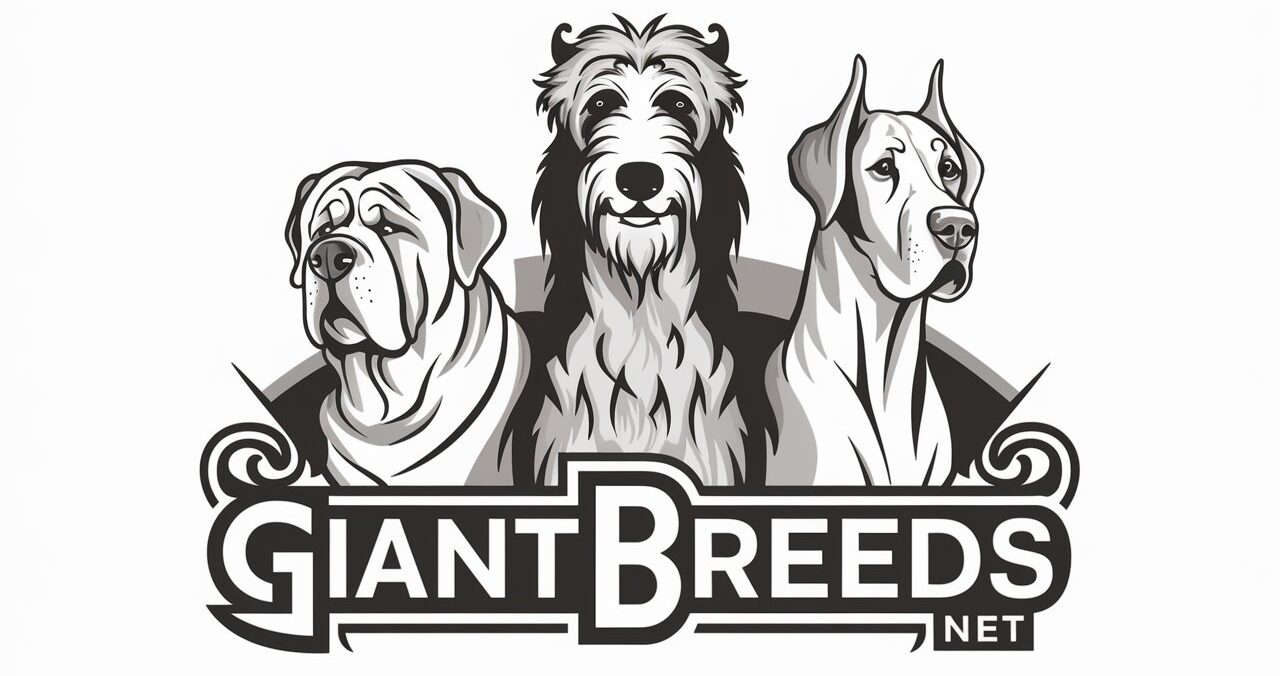Your cart is currently empty!
Everything You Need to Know About Raising a Brave Caucasian Ovcharka
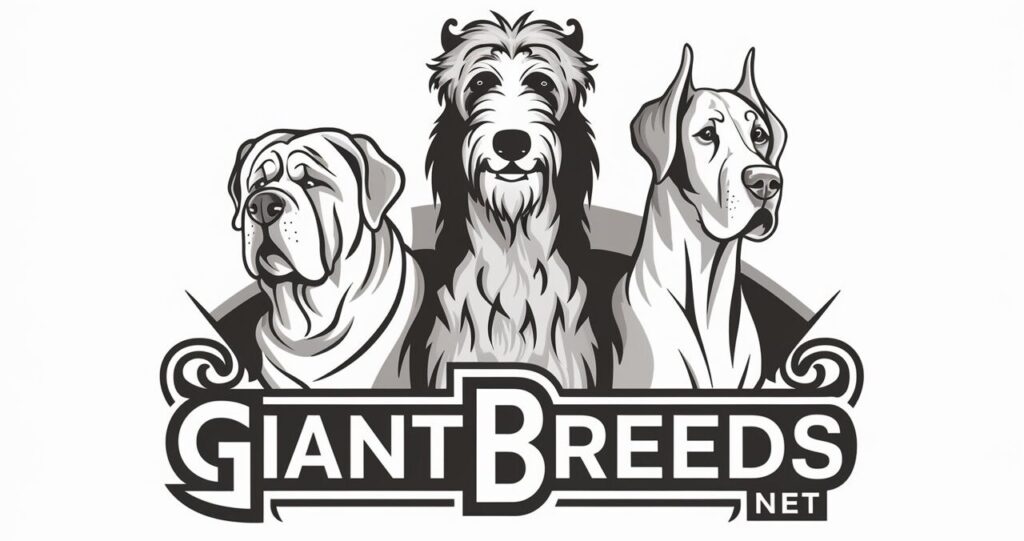

The Caucasian Ovcharka: A Comprehensive Guide for Potential Owners
The Caucasian Ovcharka: Your Ultimate Guide
Thinking about bringing a Caucasian Ovcharka, also known as the Caucasian Shepherd Dog, into your home? This breed is truly impressive with its size, strength, and protective nature. Originating from the Caucasus region, these dogs have been guarding livestock and property for centuries. Let’s dive into what makes them special and what you need to know before welcoming one into your family.
Characteristics
Caucasian Ovcharkas are big and powerful, weighing between 99 to 170 pounds and standing 24 to 30 inches tall. Their thick, double coat comes in various colors like gray, fawn, brindle, and white. With their strong build and imposing presence, they make excellent guardians.
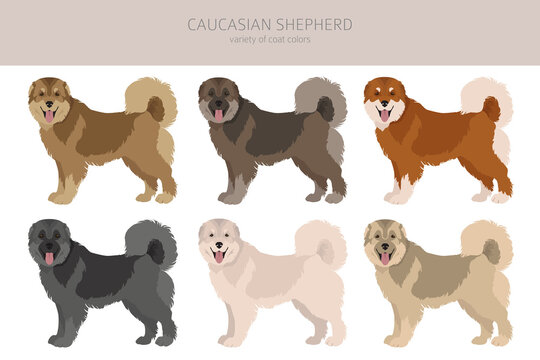

History
These dogs have a rich history dating back thousands of years. Bred by shepherds in the Caucasus Mountains, they protected livestock from predators like wolves and bears. Their natural guarding instincts and loyalty have made them a beloved breed for those who value strong, protective dogs.
Behavior
Protective Instincts
Owning a Caucasian Ovcharka can be both rewarding and challenging due to their strong protective instincts and independent nature. These dogs are naturally wary of strangers and can exhibit aggressive behaviors if not properly trained and socialized. Early socialization is crucial to help them differentiate between real threats and everyday situations. Introducing them to various people, environments, and other animals from a young age can significantly reduce their tendency to be overly protective or aggressive1.
Training a Caucasian Ovcharka requires consistency, patience, and a firm yet gentle approach. Positive reinforcement techniques, such as treats and praise, work well with this breed. However, due to their independent streak, they may not always respond immediately to commands. Short, engaging training sessions are more effective than long, repetitive ones. It’s also beneficial to incorporate mental stimulation through puzzle toys and obedience training to keep their minds sharp and focused2.
Managing the protective instincts of a Caucasian Ovcharka involves setting clear boundaries and establishing yourself as the pack leader. These dogs respect strong leadership and need to understand their role within the family. Desensitization techniques, such as gradually exposing them to situations that trigger their protective instincts, can help them remain calm and composed. Pairing these exposures with positive reinforcement can reduce anxiety and aggressive reactions1.
Owners of powerful breeds like the Caucasian Ovcharka should be aware of legal concerns, including breed-specific legislation (BSL). Some regions have laws that restrict or ban the ownership of certain breeds deemed dangerous. These laws can vary significantly by location, so it’s essential to check local regulations before acquiring a Caucasian Ovcharka. Violating BSL can result in fines, confiscation of the dog, or even criminal charges34. Additionally, owners may be required to follow specific guidelines, such as muzzling the dog in public, purchasing liability insurance, or keeping the dog in a secure enclosure5.
By understanding and addressing these behavioral challenges and legal considerations, you can ensure a safe and harmonious relationship with your Caucasian Ovcharka. With proper training, socialization, and management, these loyal and protective dogs can become well-behaved and cherished members of your family.
1: K9 Web 2: Dogster 3: PetPlace 5: dogbitelaw 4: Your Pet Planet

Physical Power
Known for their immense physical power, these dogs have strong muscles and a robust frame. They’re capable of defending their territory and loved ones effectively. Their protective nature is matched by their intelligence, making them both formidable and trainable.
Getting Along with Other Pets
Got a Caucasian Ovcharka? They can live with other pets, but you’ll need to manage them carefully and start socializing early. Here’s how:
- Protective Nature: They’re naturally protective, so they might be wary of other animals. Introduce them slowly.
- Start Young: Early socialization is key. The sooner they meet other pets, the better they’ll get along.
- Supervise: Always keep an eye on their interactions, especially at first.
- Train Consistently: Commands like “leave it” or “stay” can help manage their behavior.
- Set Boundaries: They can be dominant, so make sure all pets know their place in the household.
Spotting Aggression
Caucasian Ovcharkas can show aggression if not properly trained. Watch for these signs:
- Territorial Behavior: Growling, barking, or lunging at strangers or other animals.
- Protective Instincts: Standing between you and a perceived threat, intense staring, or raised hackles.
- Dominance: Growling, snapping, or trying to control the situation.
- Resource Guarding: Growling or snapping when someone approaches their food or toys.
- Fear-Based Aggression: Cowering, growling, or showing teeth when they feel threatened.
Managing Aggression
Here’s how to handle aggression in your Caucasian Ovcharka:
- Early Socialization: Expose them to different people, animals, and environments early on.
- Consistent Training: Use positive reinforcement to teach good behavior.
- Seek Professional Help: If aggression is a concern, consult a professional dog trainer or behaviorist.
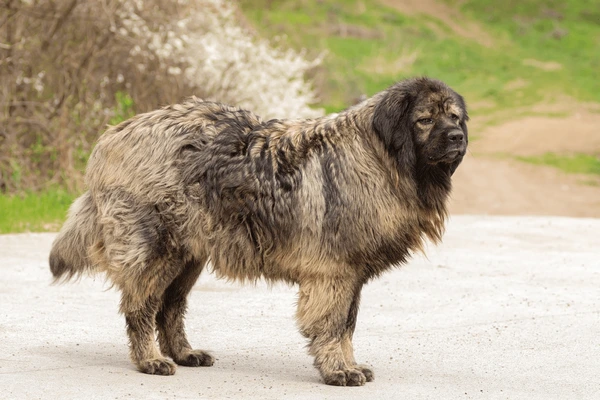
Training Your Caucasian Ovcharka
Best Practices
Training a Caucasian Ovcharka takes patience, consistency, and a gentle yet firm approach. Here are some tips:
- Positive Reinforcement: Use treats, praise, and play to reward good behavior. They love encouragement!
- Start Early: Begin training as soon as possible. Puppies are easier to train, so start with basics like “sit,” “stay,” “come,” and “leave it.”
- Socialization: Introduce them to different people, places, and animals early on. This helps manage their protective instincts and reduces aggressive behavior.
- Be Consistent: Stick to the same commands and expectations. Consistency helps them understand what you want.
- Firm Leadership: Establish yourself as the leader. They respect strong leadership and clear boundaries.
Training Techniques
Caucasian Ovcharkas are smart but can be independent and strong-willed. Here’s how to handle that:
- Short, Fun Sessions: Keep training sessions short and frequent. Aim for multiple 10–15-minute sessions throughout the day to keep them engaged.
- Mental Stimulation: Use puzzle toys, scent games, or challenging obedience tasks. Mental exercise is as important as physical exercise.
- Desensitization: Gradually expose them to situations that trigger their protective instincts, like strangers approaching the home. Pair this with positive reinforcement to reduce anxiety.
- Advanced Training: As they grow, consider advanced obedience classes or a professional trainer. This reinforces basic commands and helps them stay calm in various situations.
- Behavior Modification: If they show undesirable behaviors like resource guarding or excessive barking, work with a behaviorist to create a customized plan.
Common Mistakes
- Inconsistent Training: Inconsistent commands and routines can confuse them and lead to behavioral issues. Stay consistent!
- Skipping Socialization: Not socializing them properly can make them fearful or aggressive. Early and ongoing socialization is key.
- Underestimating Their Strength: These dogs are powerful. Underestimating their strength can lead to dangerous situations if they’re not well-trained.
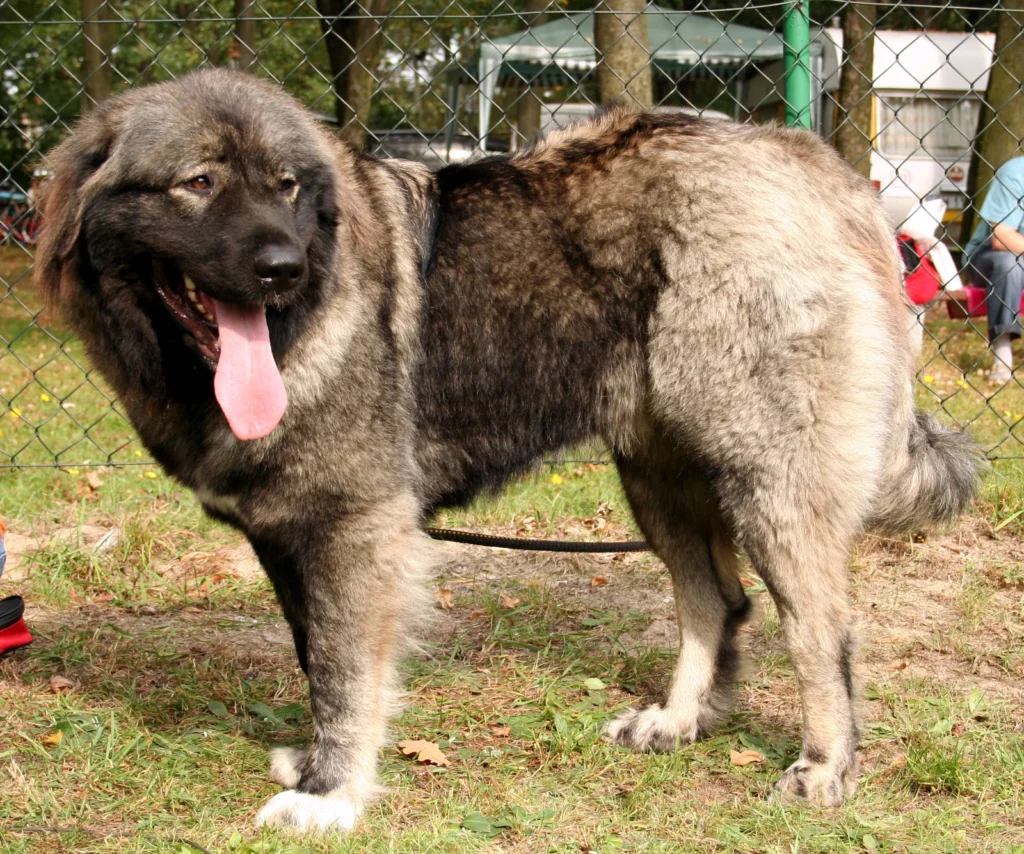
Exercise Needs for Your Caucasian Ovcharka
While the Caucasian Ovcharka doesn’t need as much exercise as some other large breeds, regular physical activity is still essential for their health and happiness. Here’s what you need to know:
- Daily Walks: Aim for one or two moderate walks each day. These walks help them burn off energy and stay fit.
- Free Roaming: A secure yard where they can roam and explore is great for their mental stimulation and natural behaviors.
- Mental Challenges: Keep their minds sharp with puzzle toys or obedience training sessions.
- Playtime: Interactive play like fetch or tug-of-war strengthens your bond and gives them extra exercise.
- Avoid Overexertion: Don’t overdo it, especially in hot weather. Watch for signs of fatigue and keep them hydrated.
Exercise Tips
- Consistency: Stick to a regular exercise routine to keep them fit and prevent behavioral issues.
- Mix It Up: Vary their activities to keep them engaged and avoid boredom.
- Supervise: Always keep an eye on them during exercise, especially if they’re off-leash.
Products
Enhancing Your Caucasian Ovcharka’s Well-being
The recommended products play a crucial role in training and maintaining the health and happiness of your Caucasian Ovcharka. Training collars, long leashes, and clicker training kits facilitate effective obedience training, ensuring your dog understands commands and behaves appropriately. Puzzle feeders, interactive toys, and snuffle mats provide essential mental stimulation, keeping your Ovcharka engaged and preventing boredom. Joint supplements and high-quality dog food support their physical health, particularly their joints and overall nutrition. Dental chews help maintain oral hygiene, while grooming tools manage their thick coat, reducing shedding and matting. Durable fetch toys, tug toys, and agility equipment offer physical exercise and strengthen the bond between you and your dog. Together, these products create a comprehensive approach to caring for your Caucasian Ovcharka, promoting a balanced and fulfilling life.
Training
Training Collars: Useful for obedience training and managing behavior. Most of these collars are either shock collars or have the spikes that “bite” into the neck and we at Giant Breeds are against these types of collars we will not be recommending any.
Long Training Leashes: Great for recall training and giving your dog some freedom while maintaining control.
Clicker Training Kits: Effective for positive reinforcement training.
🛠️ Skill Track Compatibility
Why These Tracks Are Listed:
Every giant breed has strengths shaped by instinct, structure, and temperament. The Skill Tracks listed here highlight areas where this breed is most likely to thrive—not just in training, but in purpose. These aren’t requirements or limitations. They’re opportunities. When matched well, Skill Tracks bring out the best in both dog and human—offering focus, fulfillment, and a deeper working bond.
Caucasian Ovcharka is good at Protection because of their raw power and strong suspicion of strangers. They’re born defenders that require respect and training.
Caucasian Ovcharka is good at Guarding because of their deep territorial instinct. They work best when given room to monitor and respond.
Caucasian Ovcharka is good at Companion Mastery because, when bonded, they are devoted and gentle with their people. They need clarity, but return loyalty tenfold.
Mental Stimulation
Puzzle Feeders: These help keep your Ovcharka mentally engaged while they eat.
Interactive Toys: Toys that dispense treats or require problem-solving can keep their minds sharp.
Snuffle Mats: Encourage natural foraging behavior and provide mental stimulation.

Health
Joint Supplements: Important for maintaining joint health, especially in large breeds prone to hip and elbow dysplasia.
High-Quality Dog Food: Formulated for large breeds to ensure they get the right nutrients.
Dental Chews: Help maintain dental health and reduce plaque buildup.
Grooming Tools: Brushes and de-shedding tools to manage their thick double coat.
Exercise
Durable Fetch Toys: Perfect for interactive play and exercise.
Tug Toys: Great for building strength and bonding with your dog.
Agility Equipment: Can be used to create a fun and challenging exercise routine.
These products can help ensure your Caucasian Ovcharka stays healthy, happy, and well-behaved.
Ailments
Common Ailments in Caucasian Ovcharka Dogs
The Caucasian Ovcharka, also known as the Caucasian Shepherd Dog, is a majestic and powerful breed known for its protective nature and loyalty. However, like all breeds, they are prone to certain health issues. Understanding these common ailments can help you provide the best care for your Ovcharka.
1. Hip and Elbow Dysplasia
Hip and elbow dysplasia are common in large breeds, including the Caucasian Ovcharka. These conditions occur when the joints do not develop properly, leading to arthritis and pain. Regular vet check-ups and maintaining a healthy weight can help manage and prevent these issues1.
2. Degenerative Myelopathy
This is a progressive disease of the spinal cord that affects older dogs. It leads to a loss of coordination in the hind limbs and eventually paralysis. While there is no cure, physical therapy and supportive care can improve the quality of life for affected dogs1.
3. Heart Conditions
Caucasian Ovcharkas can be prone to various heart conditions, including dilated cardiomyopathy. Regular cardiac screenings and a healthy diet are essential for early detection and management1.
4. Eye Conditions
Eye problems such as cataracts and progressive rod-cone degeneration can affect the Ovcharka. These conditions can lead to vision loss if not treated. Regular eye exams are crucial for early detection and treatment1.
5. Gastric Dilatation-Volvulus (GDV)
Also known as bloat, GDV is a life-threatening condition where the stomach twists, trapping gas inside. Immediate veterinary attention is required if your dog shows signs of bloat, such as a distended abdomen, restlessness, or unproductive vomiting2.
6. Obesity
Due to their large size, Caucasian Ovcharkas are prone to obesity, which can exacerbate other health issues like joint problems and heart disease. A balanced diet and regular exercise are essential to keep your dog at a healthy weight3.
7. Patellar Luxation
This condition occurs when the kneecap dislocates from its normal position. It can cause pain and lameness. Surgery may be required in severe cases1.
Preventive Measures
- Regular Vet Visits: Routine check-ups can help catch health issues early.
- Balanced Diet: Ensure your Ovcharka gets a diet rich in nutrients.
- Exercise: Regular physical activity helps maintain a healthy weight and overall well-being.
- Genetic Screening: If you’re getting a puppy, ensure the breeder has screened for common genetic issues.
By being aware of these common ailments and taking preventive measures, you can help ensure your Caucasian Ovcharka lives a long, healthy, and happy life.
Creating the Perfect Home for Your Caucasian Ovcharka
Ideal Home Size
Caucasian Ovcharkas love having plenty of space to move around. They thrive in large homes where they can roam freely. While they can adapt to smaller spaces, it’s not ideal due to their size and energy levels.
Yard Space
Caucasian Ovcharkas thrive in homes with ample space to move around. Ideally, they should have access to a large, secure yard where they can roam and explore. A yard of at least half an acre is recommended, but more space is always better. The yard should be enclosed by a solid fence that’s at least five feet high to prevent them from wandering off12.

Special Care Tips
Diet & Nutrition
Feed your Ovcharka a balanced diet with high-quality dog food made for large breeds. Keep an eye on their weight to avoid obesity and related health issues.
Grooming
Their thick double coat needs regular grooming to prevent matting and control shedding. Brush them at least once a week, and more often during shedding seasons. Bathe them as needed.
Life Span
Caucasian Ovcharkas typically live 10 to 12 years. Regular vet check-ups and a healthy lifestyle can help them live longer.

